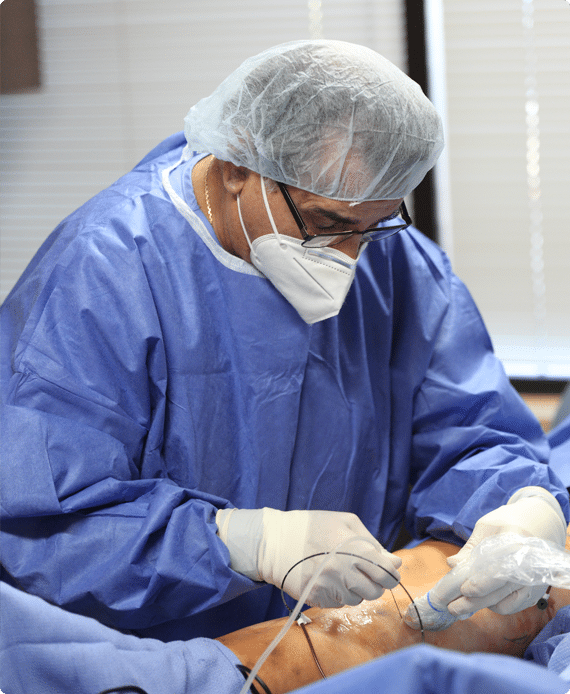Please Follow us on:
Treatments
Venous Treatments

venous treatments
Deep Venous Treatments
Iliac Vein Compression
We also treat May-Thurner Syndrome, or iliac vein compression syndrome. May-Thurner occurs when there is a compression of the iliac vein by the artery that runs alongside it. This compression causes swelling and pain in the leg. It can also lead to the development of blood clots.
How do you know if you have May-Thurner Syndrome?
Symptoms include:
- Severe leg swelling
- Redness and/or warmth in the leg, particularly in the calf
- Pain or tenderness in the leg
We begin a treatment for DVT by putting an IV into the vein where the blood clot is located. With special tools, we can remove some of the blood clot from the leg. We can also place “clot buster” medicine into the vein which starts to break up the blood clot. This may prevent long term complications from DVT such as severe swelling, pain and venous ulcers.
This procedure often requires treatment in a hospital facility. It may even require you to spend the night at the hospital. Typically, you would be able to go home from the hospital the following day.

venous treatments
May-Thurner Syndrome
We also treat May-Thurner Syndrome, or iliac vein compression syndrome. May-Thurner occurs when there is a compression of the iliac vein by the artery that runs alongside it. This compression causes swelling and pain in the leg. It can also lead to the development of blood clots.
How do you know if you have May-Thurner Syndrome?
Symptoms include:
- Leg swelling
- Leg heaviness or the feeling of congestion
- Discoloration of the skin
- Enlarged or varicose veins
We begin treatment for May-Thurner Syndrome by placing an IV in either the lower leg or groin area so that we can insert an ultrasound device into the tube and take pictures to pinpoint the area. If the vein is being compressed by the artery, we insert a stent to open the vein, which allows the stent to overcome the compression of the artery.
Plan on 1-2 hours for this procedure. While we could take less – or occasionally more time – 2 hours is typically standard.
After the procedure, you will be reunited with your family in a recovery room, where you will stay up to 2 to 3 hours. Unless our physicians recommend otherwise, you will be able to return home the same day.
MORE INFORMATION
Superficial venous disease treatments
We treat a variety of superficial venous diseases. These “incompetent veins” can cause swelling, pain, discoloration and venous ulcers. Whether you have a venous ulcer, painful varicose veins or aching and swelling in your legs, we can help with one of these three treatments:
Ablation of the superficial venous system
including the greater saphenous veins (GSV) or the lesser saphenous veins (LSV). After we insert an IV into the vein being treated, we can use a machine like a laser that allows us to intentionally shut down a vein. We place one of these devices in the vein, which irritates it and causes it to close down. The venous blood is redirected to healthier veins that aren’t leaking or flowing backwards.
Phlebectomy
This literally means to “take the vein out.” Patients with large, painful varicose veins can have them removed. Dr. Mustapha has invented and patented a special device that looks like a very tiny crochet hook that allows varicose beings to be removed. We make a tiny puncture in the skin with one side of this tool and use the small hook on the other side to remove the vein. The puncture is small enough that you won’t require any stitches or staples.
Sclerotherapy
With this procedure, we inject a foam medication through a very small butterfly needle into the vein we want to close down. This allows the blood to be redirected to healthier veins. This is particularly helpful in the treatment of venous ulcers.